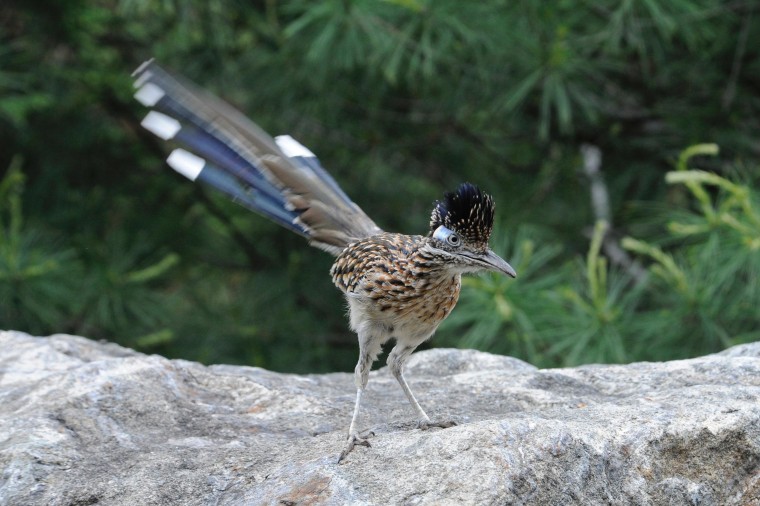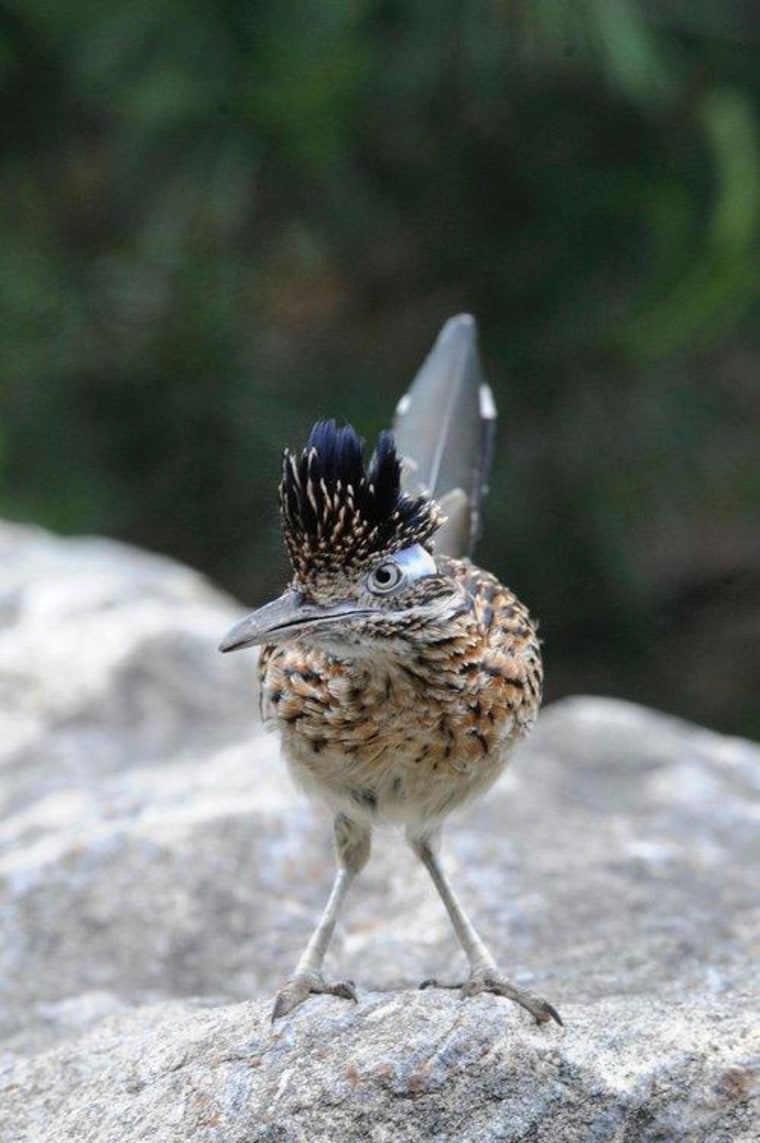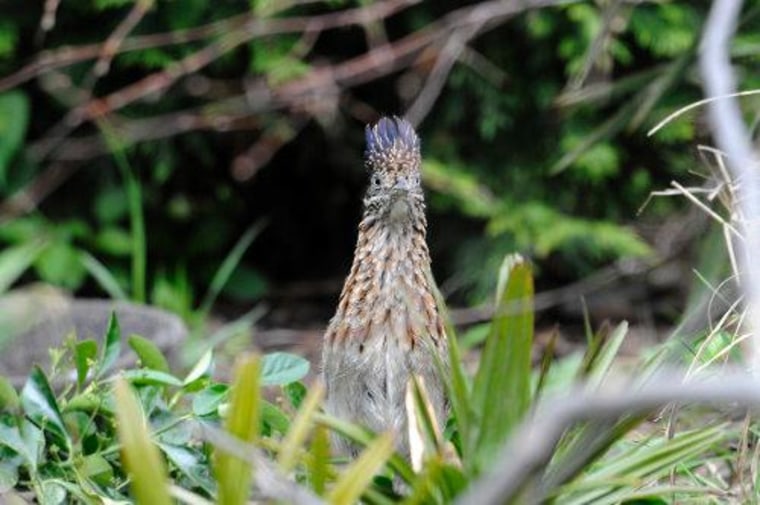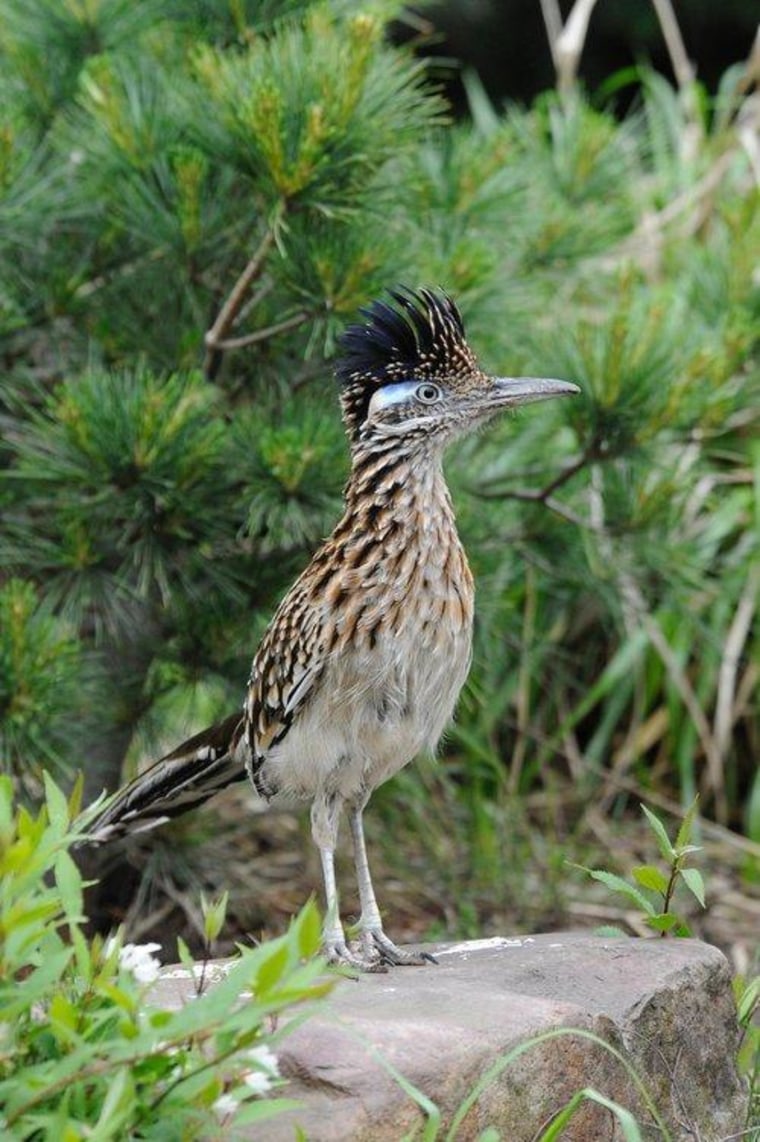The coyotes at the Wildlife Conservation Society’s Queens Zoo may need to watch their backs from now on, since a Greater Roadrunner arrived at the zoo this week.
The unnamed male bird is the only one of its kind at a New York City zoo. Roadrunners, made famous by the cartoon character that constantly clashed with Wile E. Coyote, have the fastest running speed of any flighted bird: They can travel as fast as 25 miles per hour on foot.

While roadrunners don't really make a "beep beep" sound, they do use a variety of calls with specific meanings. Some calls warn of impending danger, while others attract mates. These birds are native to the American Southwest and Mexico, where the Wildlife Conservation Society has a number of field projects as part of its conservation efforts.


As for the zoo's resident coyotes, don't worry: They won't be near the roadrunner. The new bird can be seen in the thick-billed parrot exhibit, while the coyotes will remain in the Wild Side section — hopefully far away from any anvils!
More:
- Rescued baby seal now has a name, thanks to contest
- Video: Elvis the pooch rescued from pipe
- Significant otters: Three North American river otters are born in Brooklyn
Want more cute animal photos? Follow us on Pinterest!
